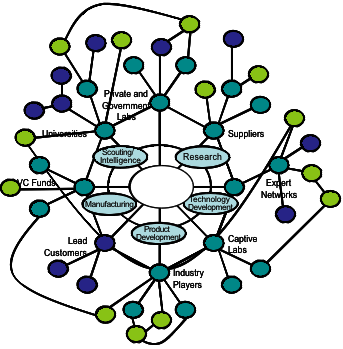Why Staking Rewards and Institutional Features Are Changing the Crypto Game
Wow! Ever felt like staking rewards were too good to be true? Yeah, me too. I remember diving into yield farming last year, thinking it was the ultimate way to make my crypto work for me while I slept. But, here’s the thing: the deeper I dug, the murkier it got. Something felt off about the promises of effortless gains. Initially, I thought staking was just passive income, but then I realized it’s a whole ecosystem with institutional muscle flexing behind the scenes.
Seriously, staking isn’t just for the little guy anymore. Big players with deep pockets are reshaping how these rewards function, and that brings new risks and opportunities. On one hand, you get stability and trust from institutional-grade features; though actually, that often means more centralized control creeping in, which bugs me a bit. It’s like giving up some freedom for comfort — sounds familiar, right?
Anyway, I was messing around with different wallets recently and stumbled across the okx wallet. What caught my eye was how seamlessly it integrates with the OKX centralized exchange, making staking and yield farming way more accessible. No more juggling multiple platforms or worrying about clunky interfaces that feel like ancient relics.
Yield farming itself? It’s a wild west out there. You have these high APRs floating around that make your head spin, but behind those numbers lie complex smart contracts and liquidity pools that most folks barely understand. Hmm… I remember when I first tried to explain it to a buddy — his eyes glazed over in no time. Not exactly dinner conversation material unless you’re really into decentralized finance jargon.
Here’s something else: institutional features often come with better security protocols. That’s a double-edged sword. While it reduces hacks and exploits, it can also mean your assets are locked into platforms with opaque policies. You’re trusting an entity instead of a purely decentralized system, which might not sit well with hardcore crypto purists.
Check this out — I found that wallets like okx wallet are trying to strike a balance by offering user-friendly interfaces coupled with solid security. It’s like having a fortress with a velvet glove. For traders who want to dip toes into staking but aren’t ready to manage private keys obsessively, this is a game-changer.

Institutional Features: The New Frontier
Okay, so institutional features aren’t just about big money throwing weight around. They bring tools that were previously the domain of hedge funds and Wall Street types. Think advanced analytics, risk management dashboards, and compliance layers that make regulators nod in approval. For a long time, that stuff was way out of reach for everyday traders, but now? It’s creeping into mainstream wallets and platforms.
My instinct said these tools would make staking confusing, but actually, they’re simplifying it in a surprising way. You get insights on your yields over time, can set automated strategies, and even monitor institutional flows to time your moves better. That’s something I wish I had back when I started — pure guesswork mostly.
But there’s a snag. Institutions often require KYC (Know Your Customer) and AML (Anti-Money Laundering) compliance, which can feel like a buzzkill for privacy fans. Personally, I get where the regulators are coming from, but it’s a trade-off that makes the crypto space feel less rebellious and more like traditional finance in some ways.
Yield farming, with its flashy returns, still attracts a lot of retail traders looking to maximize income. However, the complexity and risks—like impermanent loss and smart contract vulnerabilities—mean that institutional-grade features can help mitigate some of those dangers through better oversight and insurance products.
Here’s a quick tangent — oh, and by the way, if you’re thinking about jumping into yield farming via something like the okx wallet, make sure you read the fine print on staking durations and withdrawal terms. Some platforms lock your funds for weeks or months, which can be a nightmare if the market turns south.
Yield Farming: High Stakes, Higher Rewards?
Yield farming has this allure like a neon sign flashing “get rich quick,” but the reality is more nuanced. You’re essentially providing liquidity to decentralized exchanges or lending platforms, earning fees and tokens in return. The upside? Potentially very juicy rewards. The downside? Volatility that can wipe out gains overnight.
Initially, I thought it was a straightforward swap—put in your tokens, watch your balance grow. Actually, wait—let me rephrase that—it’s more like navigating a roller coaster blindfolded. The protocols often change incentives rapidly, and what was profitable last week might be a trap today.
Institutional involvement is shifting this landscape. By bringing in more capital and professional risk assessment, they’re smoothing out some of the craziness. Still, the very nature of yield farming means it remains inherently risky and not for the faint of heart.
Here’s a personal note: when I started yield farming, I lost some serious coin because I didn’t grasp impermanent loss until it was too late. It’s when your staked tokens lose value relative to just holding them outright—something that doesn’t get enough spotlight in hype stories. That’s why using a wallet with clear analytics, like the okx wallet, can really change your game plan.
Also, yield farming protocols keep evolving. Layer 2 solutions and cross-chain opportunities are opening up new frontiers, but they also add complexity that can be overwhelming. So, having a reliable, integrated wallet that interfaces well with exchanges and protocols is invaluable.
Wrapping It Up (But Not Really)
So, here’s where I land: staking rewards and yield farming are powerful, but they’re not magic beans. Institutional features bring professionalism and security, but also a layer of centralization and compliance that changes the vibe of crypto. Using tools like the okx wallet helps bridge that gap, making these complex mechanisms more accessible without losing sight of security.
I’m biased, sure — I prefer wallets that don’t make me jump through hoops every time I want to stake or farm. But hey, the space is evolving fast. What seemed like a risky playground a couple of years ago is now attracting serious players with serious tools.
Anyway, this journey into staking and yield farming is far from over. New questions keep popping up, and not all answers are in yet. But one thing’s clear: if you want to play this game, you better pick your tools wisely and keep your wits about you. Because in crypto, the only constant is change… and sometimes, that’s what makes it exciting.


